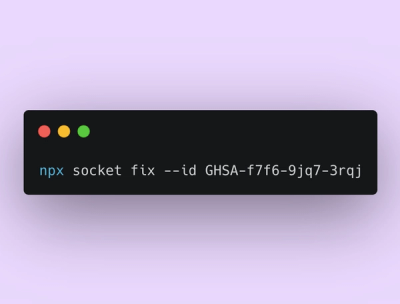
Product
Announcing Socket Fix 2.0
Socket Fix 2.0 brings targeted CVE remediation, smarter upgrade planning, and broader ecosystem support to help developers get to zero alerts.
editorjs-blocks-react-renderer
Advanced tools
EditorJS blocks render to semanticly beautiful html5 tags via React.
Renders Editor.js blocks to semantic React HTML5 components. Unnopinated and flexible.
An unnopinated React library that renders flexible HTML5 React components from Editor.js block style data.
It follows semantic practices and without inlining styles. It's flexible enough to allow developers to include their own styles via CSS classes, which can be passed to each renderer via configuration.
This also supports server side rendering.
Install the package via npm:
npm i -S editorjs-blocks-react-renderer
Import in your component:
import Blocks from 'editorjs-blocks-react-renderer';
Use it with a block style data from Editor.js:
export const Article = () => <Blocks data={dataFromEditor} />;
Blocks are independent and you can import only a set of them and use them diretly:
import { Header } from 'editorjs-react-renderer';
const dataHeader: HeaderBlockData = {
text: "Heading 2",
level: 2
}
export const Heading () => <Header data={dataHeader} className="text-xl" />;
The package ships with the following renderers, but you can include your custom ones:
This library does not include/force any style nor inlines any styles. Before you ask, we're not supporting inline styles due to Content-Security-Policy requirements.
However, each renderer supports a set of props, including className which can be used to style each block. You just need to pass a config object to Blocks or directly to any renderer like so:
<Blocks data={dataFromEditor} config={{
code: {
className: "language-js"
},
delimiter: {
className: "border border-2 w-16 mx-auto"
},
embed: {
className: "border-0"
},
header: {
className: "font-bold"
},
image: {
className: "w-full max-w-screen-md",
actionsClassNames: {
stretched: "w-full h-80 object-cover",
withBorder: "border border-2",
withBackground: "p-2",
}
},
list: {
className: "list-inside"
},
paragraph: {
className: "text-base text-opacity-75",
actionsClassNames: {
alignment: "text-{alignment}", // This is a substitution placeholder: left or center.
}
},
quote: {
className: "py-3 px-5 italic font-serif"
},
table: {
className: "table-auto"
}
}} />
The example above uses TailwindCSS classes, replacing the default ones, which you can find below:
const defaultConfigs = {
code: {
className: ""
},
delimiter: {
className: ""
},
embed: {
className: "",
rel: "noreferer nofollower external", // Generates an <a> if not able to receive an "embed" property
sandbox: undefined
},
header: {
className: ""
},
image: {
className: "",
actionsClassNames: {
stretched: "image-block--stretched",
withBorder: "image-block--with-border",
withBackground: "image-block--with-background",
}
},
list: {
className: ""
},
paragraph: {
className: ""
},
quote: {
className: "",
actionsClassNames: {
alignment: "text-align-{alignment}", // This is a substitution placeholder: left or center.
}
},
table: {
className: ""
}
}
So, in theory, any CSS framework can work seamlessly with this library as long as you pass the correct properties.
You can provide your own custom renderers or replace the default ones by passing a renderers object to the Blocks.
const Checklist: RenderFn<{
items: string[]
}> = ({
data, className = ""
}) => {
return (
<>
{data?.items.map((item, i) => (
<p key={i} className={className}>
<label>
<input type="checkbox" /> {HTMLReactParser(item)}
</label>
</p>
))}
</>
)
}
export default () => <Blocks data={dataFromEditor} renderers={{
checklist: Checklist
}} />
For embed block, you can pass a string of Feature-Policy directives for sandbox to optimize for security. Take into account that services such as YouTube won't work properly if you set those settings.
FAQs
EditorJS blocks render to semanticly beautiful html5 tags via React.
We found that editorjs-blocks-react-renderer demonstrated a not healthy version release cadence and project activity because the last version was released a year ago. It has 1 open source maintainer collaborating on the project.
Did you know?

Socket for GitHub automatically highlights issues in each pull request and monitors the health of all your open source dependencies. Discover the contents of your packages and block harmful activity before you install or update your dependencies.

Product
Socket Fix 2.0 brings targeted CVE remediation, smarter upgrade planning, and broader ecosystem support to help developers get to zero alerts.

Security News
Socket CEO Feross Aboukhadijeh joins Risky Business Weekly to unpack recent npm phishing attacks, their limited impact, and the risks if attackers get smarter.

Product
Socket’s new Tier 1 Reachability filters out up to 80% of irrelevant CVEs, so security teams can focus on the vulnerabilities that matter.